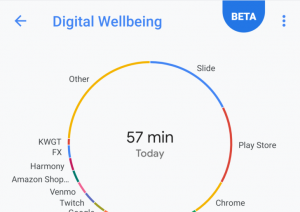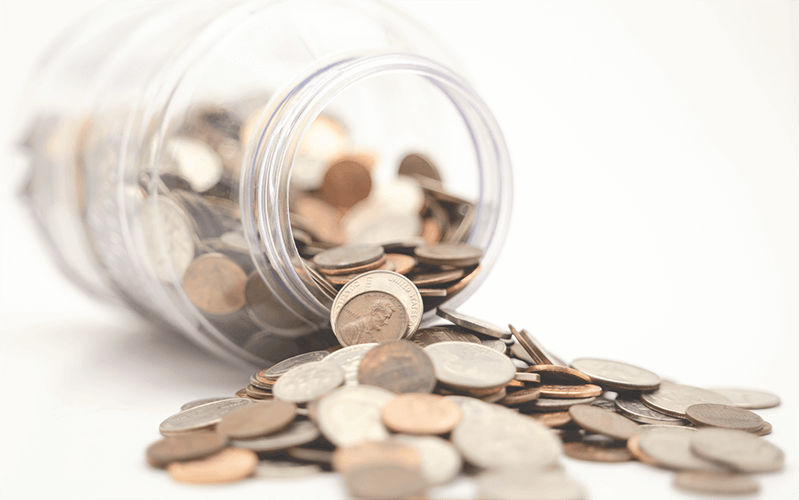Over the past week, we've all been hearing a lot about…
Often, the Queen’s word is the word in a hive. If bee psychiatrists (stay with me here) existed, they would follow the queen’s decrees on how to deal with classifying mental disorders and making psychiatric diagnoses. For us humans – or rather, our human psychiatrists – our word is a book: the Diagnostic and Statistical Manual of Mental Disorders. In 2013, this book was updated to version 5 by the American Psychiatric Association. The DSM-5 made numerous additions and changes with much criticism. One such criticism is the omission of Internet (or technology) Addiction. It only got an honorary mention in the “needs further study” section as “Internet Gaming Disorder.” By examining the signs of Internet Addiction, what tech giants are doing to address this issue, and how we can combat this risk, Internet Addiction can become legitimized, and its public awareness will aid in fighting the issue.
The days of worrying about printing the right MapQuest directions are long gone. However, our dependence on these little black mirrors in our pockets is at an all-time high. These little black mirrors not only allow us to see how our thoughts are doing, but also how the thoughts of our friends are doing, and basically the thoughts of everyone and on everything. All of this is at our very own fingertips, quickly and easily. Oftentimes, these black mirrors leave their pockets more often than necessary due to phantom notifications and urges to check them. This can create unpleasant interactions at the dinner table, in the car, and perhaps even occupying every single bit of downtime that we have. These types of interactions with our devices are unhealthy, and tech giants like Google are stepping up to address this issue.
Fighting Technology Addiction
Hey, Google. What is “Digital Wellbeing?” Digital wellbeing is the idea that great technology should improve life, not distract from it. At Google I/O 2018, digital wellbeing was a key point for the company and was introduced as one of the new, major updates for Android P, an upcoming version of the OS for Android smartphones. P includes features for users to better chart and track their phone usage, with tools to help improve and manage that very use. It is clear that Google sees Internet Addiction as a threat to their users and, with Android P, have begun to address the issue. Other companies appear to be following this digital wellbeing trend.
Hey, Siri. What is “Digital Wellbeing?” I’ve found results for “Digits for well bees. (Colony collapse disorder is for another time.) Apple announced similar digital wellbeing tools like Screen Time for iOS 12, coming later this year. To quote Apple’s senior VP of software engineering, “Some apps send us flurries of notifications trying to draw us in for fear of missing out,” he said at WWDC 2018. “For some of us, it’s become such a habit we don’t even recognise just how distracted we’ve become.” Tech giants taking action against Internet Addiction helps to legitimize the issue and opens pathways to combating it. With these new digital wellbeing tools at our disposal, combined with awareness on the issue, combating Internet Addiction can begin with us on the high ground — with an advantage.
Harnessing Digital Wellbeing
Ultimately, the ability to combat Internet Addiction lies within our very own grasp, or perhaps our very own fingertips. Awareness of the issue is important and is the kickstarter to combating the issue. Knowledge about the issue then follows and helps us to identify how and why it is an issue. Lastly, adaptive changes in behavior and treatment can help to alleviate Internet Addiction. Google and Apple provide good tools for awareness and knowledge. Although physical centers may be lacking for treatment here in the United States, the push for this issue can eliminate this issue-within-an-issue. That is to say, however, like with other addictions, physical treatment centers are not always needed. Awareness and knowledge alone, coupled with the right tools, may lead to a successful self-treatment through changes in behavior. The ability to combat Internet Addiction can come to fruition through the very black mirrors that we’re fighting against in the first place.
Below are highlights of some steps and questions to ask, along with links to full articles for taking steps toward identifying and combating Internet Addiction.
Awareness of the signs of Internet Addiction and habits that you may exhibit:
- Compulsive checking of phone for notifications
- Excessive usage of phone during activities that don’t typically require it, e.g. driving, hiking, trailing
- Feeling of notification vibration or hearing notification tone when it doesn’t actually exist (phantom notifications)
- Feeling euphoria while on the internet
- Neglecting sleep for the internet
- Using the phone/internet to escape and to temporarily ignore problems
- Waking up and immediately going to the phone for notifications/social media
Knowledge about your potential Internet Addiction by asking questions:
- Do I feel anxious, depressed, irritable, or restless when I’m away from my device? When attempting to cutdown on internet usage?
- Am I preoccupied with the internet, thinking about past experiences or thinking about the next time I’ll be on the internet?
- Do I feel the need to respond immediately to notifications, or to check my phone constantly?
- Am I finding that events aren’t engaging enough and that reaching for my phone will help?
- Do I find myself on the internet for longer than originally intended?
Treatment and steps to take toward healthy internet usage:
It is best to talk to your healthcare provider about treatment options, especially if you feel that your case is severe.
Share your plan with family and friends, as they can be of great help.
General tips:
- Learn about and utilize digital wellbeing apps and features that your devices provide.
- Set aside and plan times to be on and off the internet. Use digital and physical timers to aid as a reminder.
Set small goals to begin with:
- Go through a social event without checking for my notifications for 10 minutes.
- Go for a 5 minute walk on a nice day without checking for my notifications, then see if I need to after those 5 minutes.
- Enjoy the first moment, then Instagram or Snapchat the next.
- Ignore my phone during short car trips.
- Ignore my phone until I’ve done 2, 4, 6, or more of my small chores/errands.
Set larger goals once you feel that you are ready to taken them on:
- Check social media only once or twice a day.
- Enjoy the moments without Instagram or Snapchat.
- Go to bed without browsing the internet.
- No internet until my morning routine is complete and my breakfast is ready.
- No social media until lunch.
Bees take a break, so we should too. It may seem like bees are very “busy bees,” but bees know when to quit, and for us: knowing when to quit our honey can lead to a healthier, technological healthstyle. It can be hard when this hive of information and fun distractions are readily available to us, but by taking the first few flaps (steps for us humans), we can begin to combat this issue and raise awareness so we can all fight it together.
Resources:





This Post Has 0 Comments